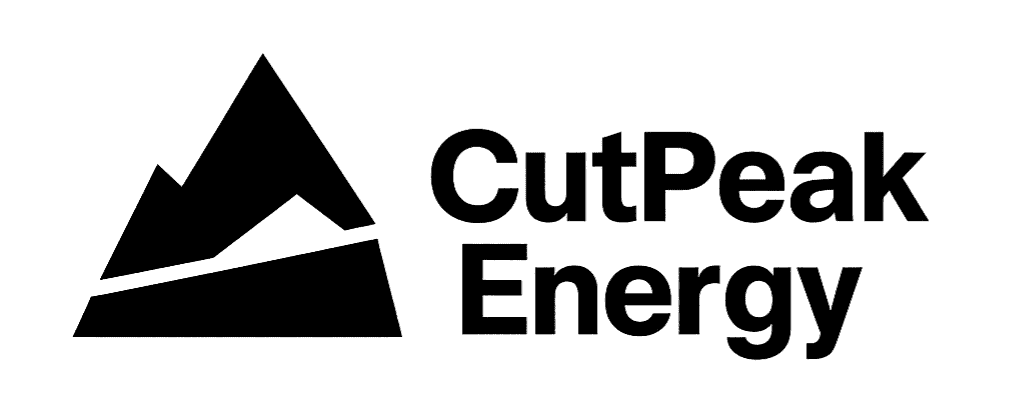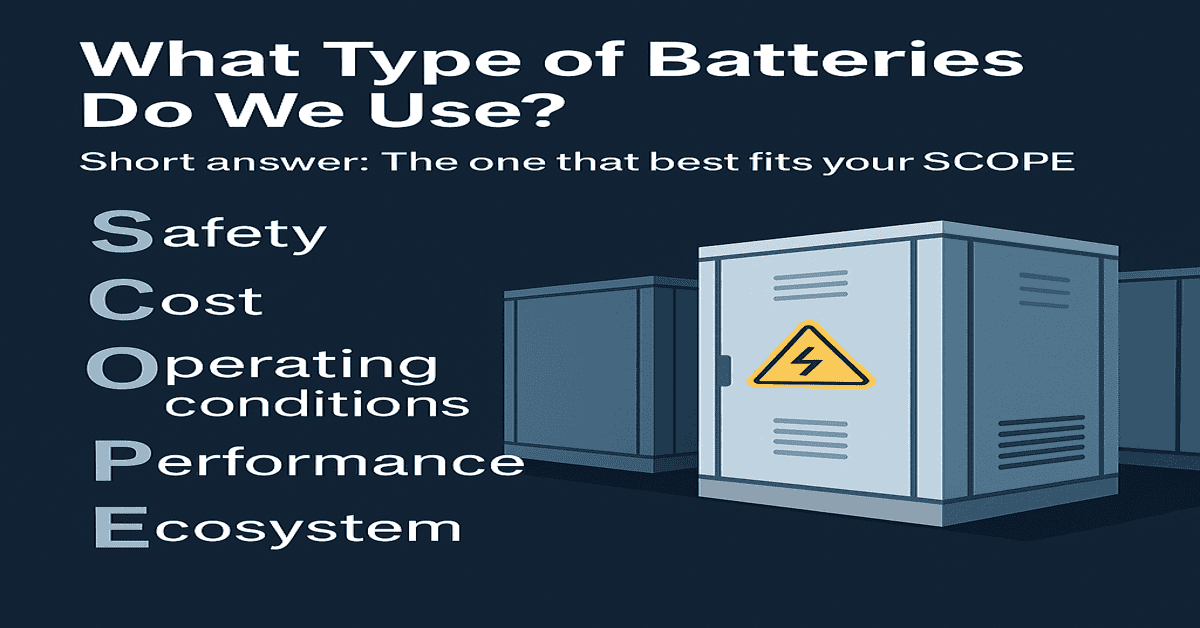Short answer: The one that best fits your SCOPE.
Unlike many developers, we don’t profit by inflating procurement costs, flipping your project midstream, or cutting your merchant revenue. In many pro-formas, developers discount grid-services revenue by 50–100% (NREL, 2020), forcing deeper cuts into your savings from demand, energy, and peak charges—much like paying credit-card interest on your own future earnings.
We do the opposite:
- Value merchant revenue.
- Protect operational savings.
- Act as your fiduciary owner’s rep.
- Share supplier savings transparently. Our income comes primarily from operating and maintaining the systems we install.
SCOPE: How We Select the Best Battery
Safety | Cost | Operating conditions | Performance | Ecosystem
Why Second-Life Batteries Often Win
- Cost: Up to 75% less than new (PMC, 2023). Some arrive in repurposed EV housings, avoiding enclosure/racking costs.
- Safety: Proven designs that reduce fire risk through spatial, chemical, software, and mechanical measures.
- Operating conditions: Built for cold, bumpy EV service; often 3C–4C rate for fast power delivery (Battery University).
- Performance: Some suppliers guarantee contracted output for the full term, swapping packs as needed (MDPI, 2023).
- Ecosystem: Cradle-to-cradle reuse and recycling (PMC, 2023).
Trade-offs for 2nd Life Batteries: Lower energy density, but space isn’t an issue at ski areas; more operations and maintenance (O&M) from module swaps, but savings outweigh the cost over the life of your project.
Tax Credit Friendly
Assembled in the U.S., eligible for the 30% Federal ITC. If you can’t use the credit, we can sell it for you (U.S. DOE).
EV origin:
- Most second-life packs in the U.S. today are pulled from domestically sold EVs, but many of those vehicles were assembled outside the U.S. (e.g., Nissan Leaf from Japan, BMW i3 from Germany, Hyundai Kona EV from South Korea, etc.).
- Others come from U.S.-assembled EVs like the Tesla Model 3/Y (Fremont, CA; Austin, TX) and certain GM models.
BESS assembly location:
- Even if the cells were made overseas, many second-life BESS integrators disassemble, test, reconfigure, and containerize the packs in the U.S. That final assembly step is what determines “Made in USA” for IRA/ITC domestic content rules.
Domestic content incentives:
- For the 30% ITC, the system must be assembled in the U.S., but the bonus credit for domestic content requires a certain percentage of U.S.-made components — which many second-life packs won’t fully meet yet because the cells are originally foreign. There again, the initial cost savings often outweigh the credit, so why burden the taxpayer?
Not Just Second-Life
We can also source new lithium-ion—from China or all-domestic suppliers—or tap into emerging chemistries like solid-state polymer and sodium-ion. Many of these are coming from New York’s “Battery Belt” between Binghamton and Rochester.
We can also source:
- New lithium-ion (domestic or imported).
- Solid-state polymer — higher density, safer (NY-BEST).
- Lithium-sulfur — lighter, cheaper (FT).
- Sodium-ion — excels in cold, uses abundant materials (Nature Energy).
These “Battery Belt” technologies from New York are emerging and may offer us first-mover advantages.
Bottom Line:
We don’t start with a battery—we start with your SCOPE, then match the tech that hits every target without draining revenue streams, with long-duration options for both demand- and energy-charge savings.


Leave a Reply